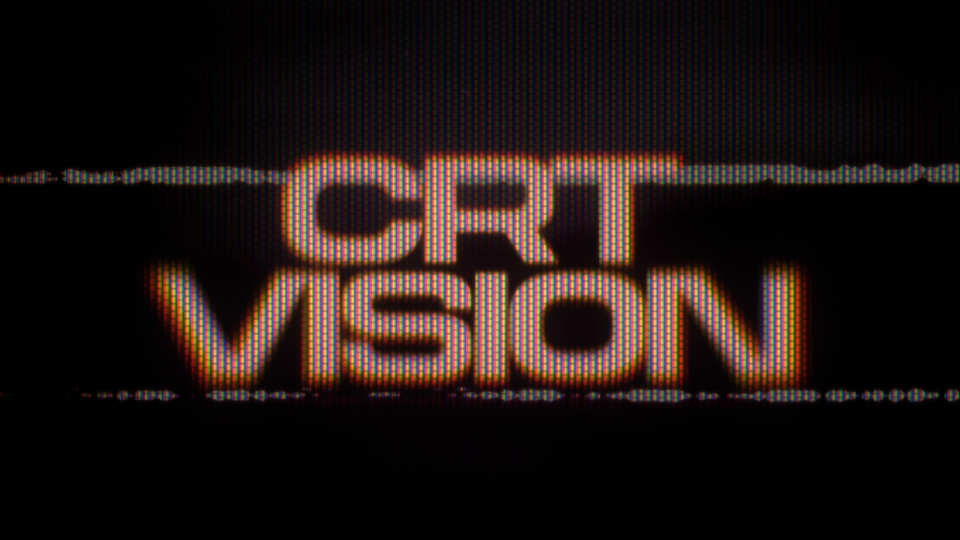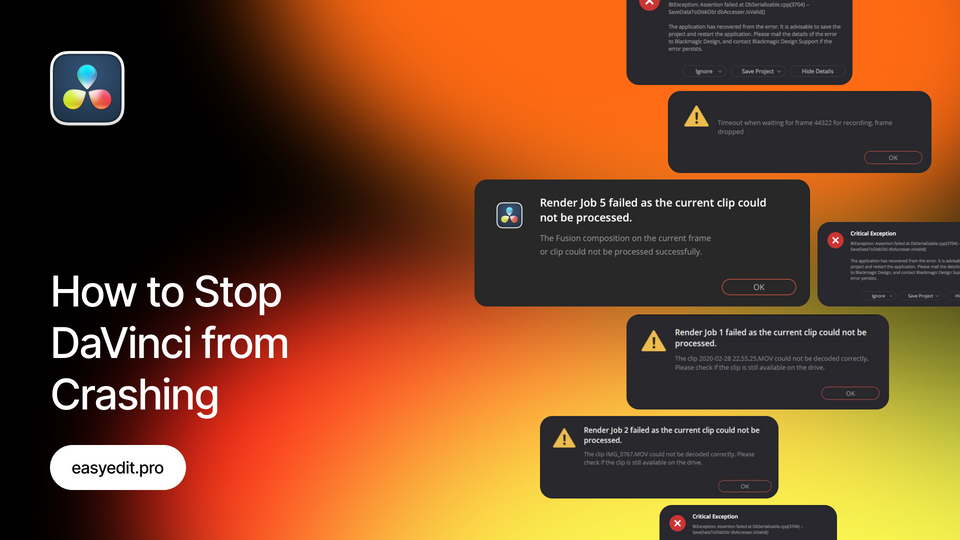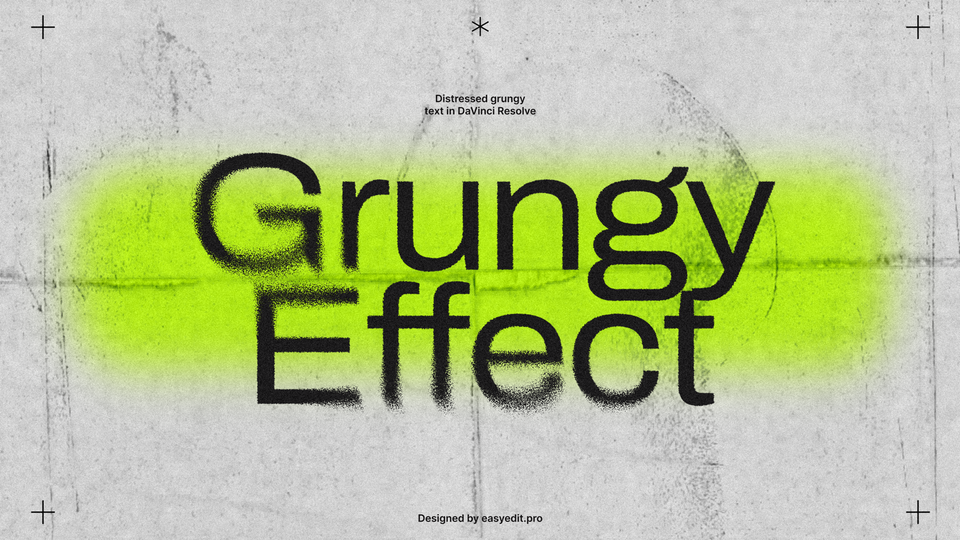
Created: 3 years ago
Main Mistakes beginners make in DaVinci Resolve
Hi, editors! In this guide we’ll go through the main mistakes beginners make in DaVinci Resolve and the easy ways to fix them!
Also, we’ll show how to download fonts to Davinci Resolve, where to find set and change framerate, how to use, edit and customize templates in DaVinci Resolve and delete duplicates.
DaVinci is one of the most convenient software for video editing and more people are switching to DaVinci Resolve each year, but you still can have some questions when you have just begun to use the software.
We’ll check how to install fonts to DaVinci Resolve and how they are connected to random bugs; how to set and change framerate in Davinci, so you won’t have any issues. We’ll also take a look to bugs that can appear when you work with DaVinci Resolve templates.
Fonts in Davinci Resolve
Surprisingly, font installation is almost the main reason for troubles in DaVinci Resolve - especially for beginners. Let's go through the quick and correct installation process.
First, check your text settings - go to the “Font Family” to see through the fonts you already have installed. If you don’t find the font family you need, you can install it.
Where you can download fonts
Here’re some sources you can use for finding the fonts:
How to download the font family
When you’ve installed the font archive, find the (.ttf) file - DaVinci Resolve accepts only True Type Face.
If you have other font file types in your archive, you can convert them to(.ttf) and upload them to DaVinci Resolve.
Click on the (.ttf) font file and select Install for all users(as an administrator) to install the font - this will save you from possible bugs, like not being able to preview the font in DaVinci Resolve.
Next, just reload DaVinci and find your font installed inside!
DaVinci Resolve templates + fonts
Also, font installation is the main reason of bugs for our editors.
As the matter of fact, there’s nothing complicated there, you just need to make sure you’ve installed all required fonts for the particular DaVinci Resolve project. If you had the required fonts before, you may need to reinstall them - the conflict of font versions can appear.
To quickly install a large number of fonts, copy all the fonts in the following path:
Windows - C:\Windows\Font
Mac - Macintosh HD/Library/Fonts or(Macintosh HD/users/”youruser”/Library/Fonts)
Linux - /usr/share/fonts
Framerate in DaVinci Resolve
Framerate can greatly affect your project, especially if you don’t know how to set it.
First of all, project framerate and clip attributes are two different settings - first is responsible for your project framerate, and second for the framerate you’ve recorded your video in.
Where to find, set and change framerate
When you first import your video to DaVinci Resolve and it has a framerate different from 24 fps, you will get a warning - change or keep your project settings.
Once you selected your option, you won’t be able to change the timeline frame rate in DaVinci Resolve, so it’s important that you know what framerate you need for your video.
To check on your video framerate, click on your clip and select Clip Attributes and you’ll get the window with your video settings, Video Framerate will appear first in the list. Here you can change your video fps.
To check on your project framerate, click on Project Settings>Master Settings and find the resolution you need under the Timeline Format.
Tip to change project fps
Though, if you will need to change the project fps, you can use this tip:
Go to the File>New Timeline and uncheck Use Project Settings in the left corner of the appearing window. After this, you’ll be able to change your timeline framerate. Select the framerate you need and click Create.
Now you’ll see a new empty timeline with the framerate you chose and all you have to do is copy the clip from the previous timeline to the new one.
Use Ctrl+A(Command+A) and Ctrl+C(Command+C) to copy clips from the old timeline and Ctrl+V(Command+V) to paste them to your new timeline; or go to the Edit>Copy and switch to the new timeline to paste the clips.
Done! Now you’ve changed your project’s framerate.
DaVinci Resolve templates + framerate
Also, fps setting can be an issue for our DaVinci editors. If your screen blacks out or you can’t see the templates you’re importing - most likely, you set the framerate, incompatible with the project.
Check the frame rate of your timeline. The needed frame rate is necessary for the templates to work correctly. Scenes can be made in several different framerates - ( 24, 25, 30, 50, 60 etc.)
To check your frame rate go to Timeline Settings in the Media Pool window.
You can set the required frame rate in the Project Settings menu and on the Timeline settings separately.
You can also set the required frame rate into Project Settings when creating a new project:
Duplicates in DaVinci Resolve
Sometimes you can see duplicates of scenes or folders after installing update of the project or you. When you double-click on .drfx file you copy it to Resolve templates folder and duplicates can cause these problems. You can try deleting the old version of the project manually.
To do this, follow the path below and seek for .drfx files(that is DaVinci projects itself).
For Windows: C:\Users\Username\AppData\Roaming\Blackmagic Design\DaVinci Resolve\Support\Fusion\Templates
For mac Os: Macintosh HD/Users/*YOUR USER*/Library/Application Support/Blackmagic Design/DaVinci Resolve/Fusion/Templates
Now just remove the .drfx files you don't need.
Done! Restart Davinci Resolve to apply changes.
Navigation in DaVinci Resolve (Templates)
DaVinci projects can contain various types of templates: transitions, titles, effects, and generators.
This might be a basic question, but sometimes navigating DaVinci can be frustrating, especially for beginners.
When installing one .drfx everything will fall into place in the Effects window on the Toolbar tab.
After installation, just restart the program and find the freshly installed templates in the relevant categories.
You can also use the search, but note that the search only looks for the names of the templates themselves, and not folders or categories.
Conclusion
Hope this guide was useful and will help you to avoid and fix the most common Davinci Resolve mistakes that beginners make!
If you want to know more about Davinci Resolve, check the guide on how to work with Davinci Resolve for beginners.
Unlock unlimited templates for DaVinci Resolve - join EasyEdit Stock to get the highest quality LUTs, transitions, text effects, and more, with assets updated daily!
10k elements for Reels and Stories
Looking to add a splash of creativity to your Instagram stories and reels? You're just a click away! Discover our iOS app infi: packed with 10,000+ unique stickers and design elements to breathe life into your social media content.







